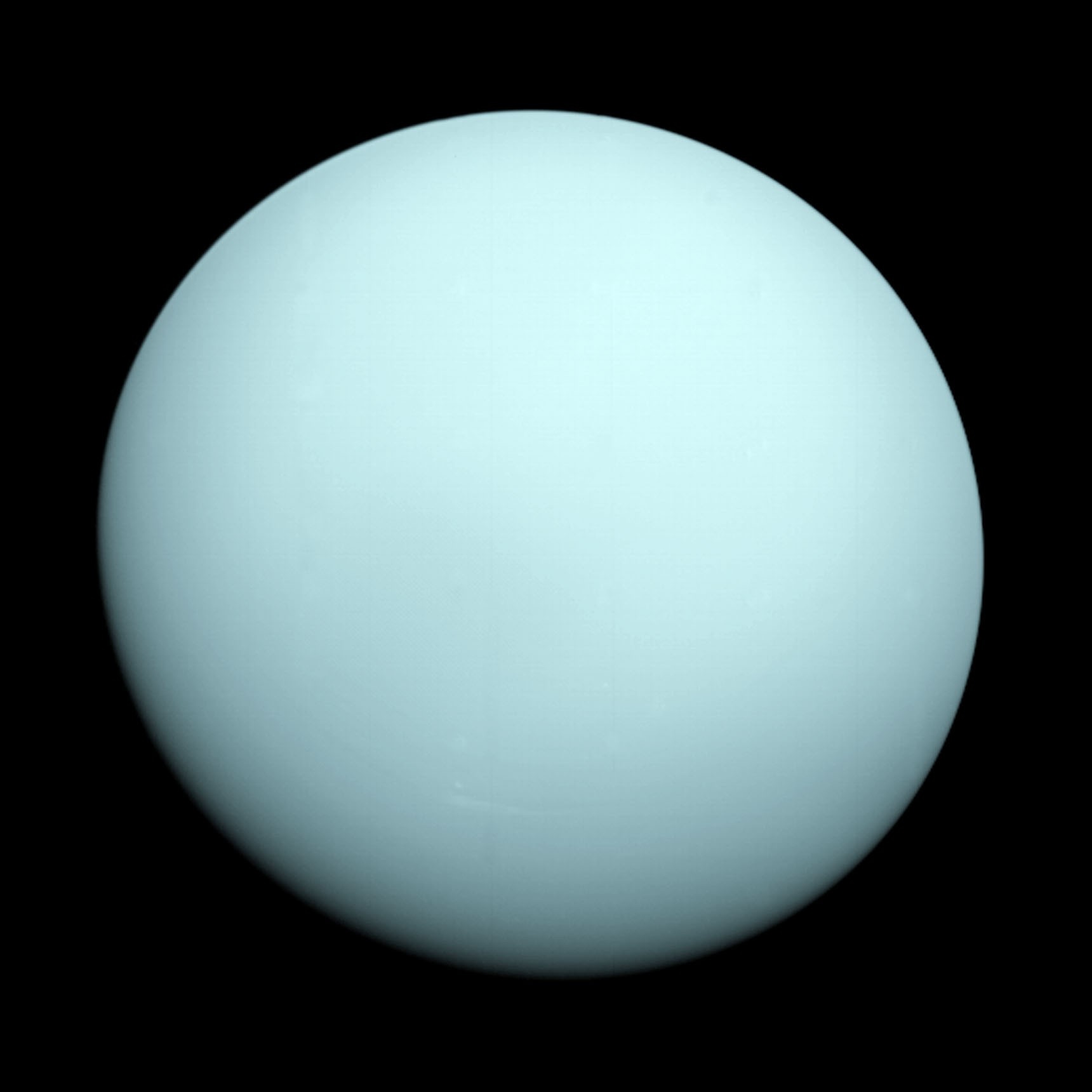The seventh planet from the Sun is a boring one. The best photos we have of Uranus were obtained in January 1986 during the passing of Voyager 2, and they revealed a cold, pale-green, ball of Methane four times the diameter of Earth with very little visible activity.

Since then, we’ve learned a lot about Uranus, and it’s far more interesting than we thought. It has rings, a magnetosphere, and numerous moons. It has a 98 degree axial tilt, meaning that the poles of the planet cycle through 42 years of sunlight and 42 years of darkness during it’s 84 year journey around the Sun.
Winds on Uranus can reach 900 Km/h, which is exactly what led to a series of new storms observed by Astronomers using the Keck telescope in Hawaii.

The above image, taken in infrared on August 6th, 2014, shows large storms in the atmosphere of Uranus. The images were taken with the 10-meter Keck telescope using adaptive optics, where parts of the telescope’s main mirror quickly shift to correct for the distortion caused by atmospheric turbulence. This technique has given some of the clearest images of distant objects even taken with ground-based telescopes, rivalling the quality of space telescopes such as Hubble.
“This type of activity would have been expected in 2007, when Uranus’s once-every-42-year equinox occurred and the Sun shined directly on the equator,” Said Heidi Hammel of the Association of Universities for Research in Astronomy. “But we predicted that such activity would have died down by now. Why we see these incredible storms now is beyond anybody’s guess.”
Uranus is made mostly of Methane and Ammonia in solid ice form, with an atmosphere of Hydrogen, Helium and a bit of Methane to give it the dull green colour. Since it has no internal heat source, all observed weather should be driven by energy from the Sun. The stormy results were unexpected, even though the team has been following the weather patterns on Uranus for 10 years.
The storms on Uranus are similar to those observed on the other gas giants, possibly due to differential rotation of the gases in the atmosphere, the Coriolis force.
When we closely observe a distant world, as with a microscope observing smaller structures, we can find a surprising degree of complexity. Uranus is a simple gas planet, but beneath the think obscuring Methane clouds, we see a world of vortices and storms, magnetism and frigidity, surrounded by complex rings and moons.
